The Dangers of Child Marriage and 5 Ways to End this Human Rights Abuse
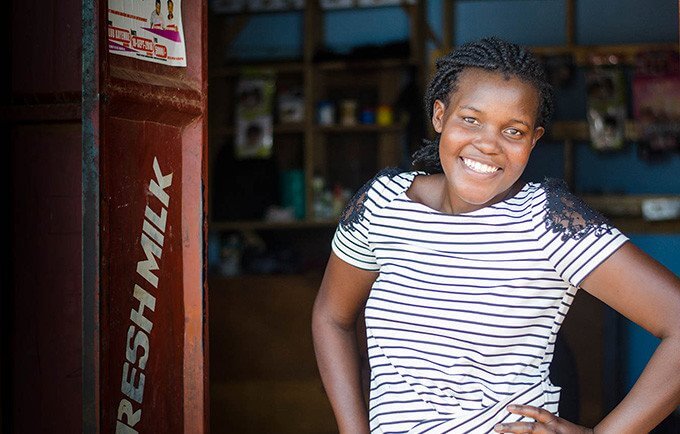
1 in 5 women in the world right now were married before they reached age 18.
However, this is a huge improvement from 20 years ago when 1 in 3 women were child brides.
Child marriage is always a human rights violation.
Many girls are unable to freely choose their partners, some of whom are more than a decade older than them. Girls are often taken out of school to do household work and raise children. Child brides are more likely to report experiencing abuse at the hands of their partners or in-laws. In the worst cases, child brides are sold into sex trafficking by their husbands or abused to the point of death.
Ending child marriage means addressing the issue at governmental, community, and individual levels.
Here are five ways UNFPA is working toward to a future without child brides:
1. Promoting Legislation
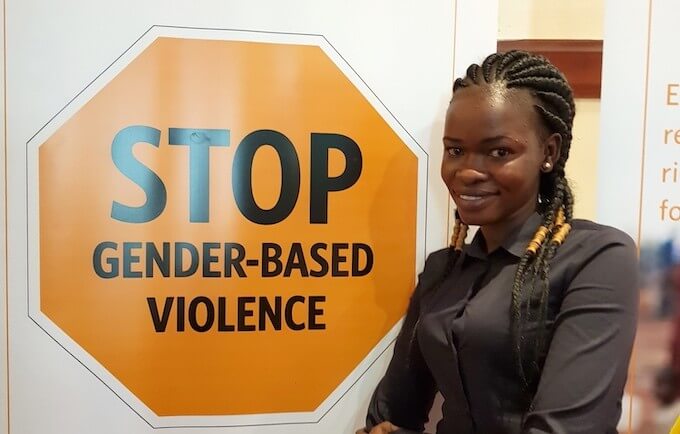
© UNFPA South Sudan/Arlene Alano
UNFPA supports the adoption of legislation that sets the legal age of marriage at 18 years old.
The age of 18 ensures that girls can finish their secondary educations before getting married. The benefit of this is two-fold. First, girls with an education are better able to pursue careers and become economically independent, giving them full agency over their futures. Second, girls who are 18 or older are legally adults and are less subject to cultural attitudes toward marriage or to the current circumstances of their family.
In South Sudan, Poni became pregnant at 16. Her parents pressured her to give up her studies and to move in with her boyfriend’s family. Instead, Poni came home and decided to pursue law school.
Now, she is a full-time mom, part-time law student and part-time advocate for child brides. She encourages other girls to say no to child marriage and supports their decisions with legal resources.
2. Supporting Gender Equality Policies
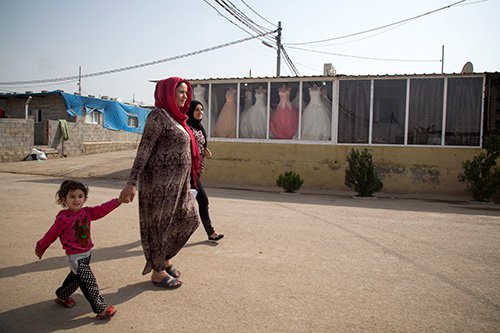
© UNFPA/Seivan Salim
Child marriage is fundamentally about gender inequality. 4 out of 5 people married before age 18 are girls. This can happen in cultures that view girl children as burdens.
The idea is that the girl will marry into another family eventually anyway, so the sooner this is done, the less resources will be wasted on them.
Girls are never a waste or burden. Ending child marriage also means ending practices, such as dowries or bride prices, that contribute to the devaluation of women in society.
It is imperative to grant women independence from their husbands through policies that support their ability to divorce, receive child support, own property, and prosecute marital abuse. Realizing gender equality and ending child marriage go hand in hand.
“You have some duties, and the most important one is to please your husband, prepare his meals, clean and iron his clothes and be an obedient woman,”
Najima’s mother to her.
Najima, a Syrian girl living in Iraw, was 12 years old when she became the wife of a man more than twice her age. Her marriage was motivated by tradition and her husband’s ability to support her parents and siblings financially.
Najima paid a much higher price. She was sexually and physically abused for years. She had 7 children with her husband before she was able to access care for gender-based violence and legal counseling for divorce at a UNFPA clinic.
3. Providing Aid During Crises
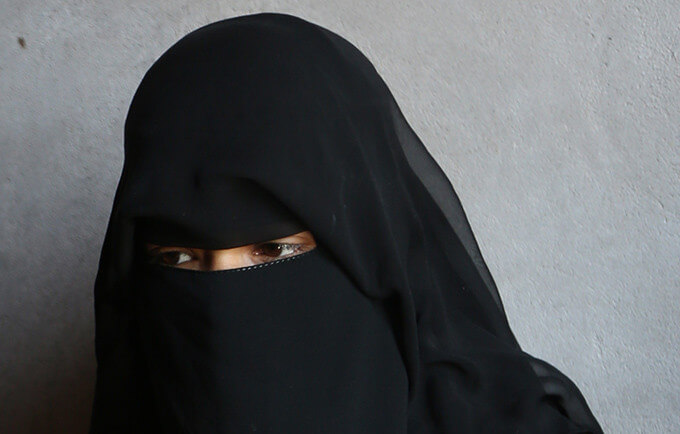
© UNFPA Yemen
In humanitarian settings, parents are more likely to marry off their daughters. Some families believe that their daughters will be safer with someone who is better able to provide for them, while other families may resort to child marriage to support themselves through a crisis.
Part of responding to child marriage is to provide for families during disasters, so they don’t turn to child marriage in the first place.
In Yemen, famine and conflict led Maram’s family to marry her at 16. Her husband was abusive throughout their marriage, and after giving birth to their second child, he forced Maram’s family to take her back.
Maram received care for gender-based violence and legal counsel that eventually allowed her to regain custody of her children and receive alimony. However, the abuse and pain that Maram experienced because of child marriage may have been avoided if her family had access to other resources.
4. Empowering Girls
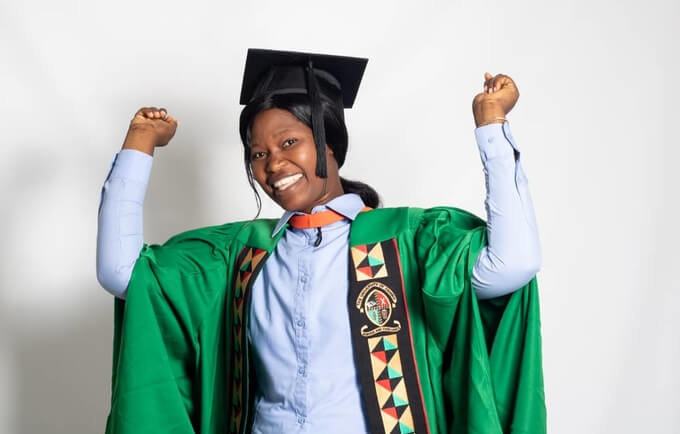
© UNFPA Zambia
UNFPA works to empower girls by teaching them about their rights to education and to freely choose who and when to marry. UNFPA also directs girls to resources to report child marriage.
Many UNFPA programs work with peer leaders, encouraging girls to pursue their educations and careers and helping them build the skills they need to succeed.
Chipasha in Zambia was married at 15 to a man 20 years older than her. He was abusive toward her, even when she was pregnant with his child.
After 1 year as a child bride, she participated in a program that spoke to the risks of child marriage. Amazingly, Chipasha then left her husband, finished at the top of her class in high school, and went a top university in Zambia. She now speaks to groups of girls to educate them on the harms of child marriage.
5. Caring for Child Brides
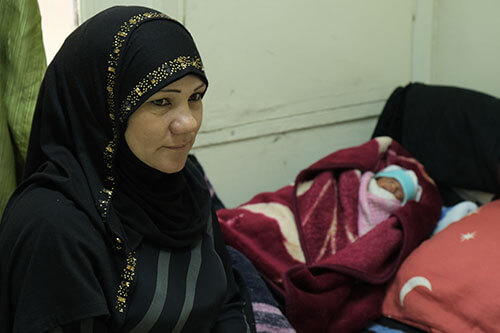
to her 13-year-old daughter.
© UNFPA Syria/Sufian Abdul-Mouty
Girls who have already been married need support. They may not know about their right to an education or need help leaving their marriage. Further, they need maternal health care and access to family planning, so they can make choices about when and if they wish to have children and then give birth safely.
Child brides may live in culturally conservative areas and may be unaware of family planning. Because of this, reaching these girls with sexual and reproductive health care and information is crucial to saving the lives of child brides.
90 percent of young mothers are married. Young mothers are 50 percent more likely to die from pregnancy and childbirth complications. But, it can be difficult to educate and care for child brides because many are taken out of school and public life.
In Syria, Fatima became a grandmother at 27 years old. She was married off as a girl and gave birth to her daughter at 14. When faced with financial problems, she married her daughter off, hoping she would be safer with the husband’s family.
Sadly, Fatima’s daughter was too young to endure pregnancy. When it came time for childbirth, her daughter and grandson were immediately admitted into an intensive care unit.
A Future Without Child Brides
Economic, educational, legal, and cultural issues exacerbate the already complicated issue of child marriage. Child brides ultimately pay for the inability of their parents, communities, or governments to keep them safe.
Many child brides experience early pregnancy, which is not just an enormous responsibility, but is life-threatening. They may also experience physical and sexual abuse.
The greatest tragedy is that many child brides, failed by the adults and institutions meant to keep them safe, are unempowered to leave their situations.
By addressing child marriage at the government level (through marital age legislation and gender equality policies), at the community level (by supporting families during crises and educating communities on the harms of child marriage), and on the individual level (by educating girls on their rights and giving them access to resources), UNFPA is working to end child marriage for good.
-Dana Kirkegaard